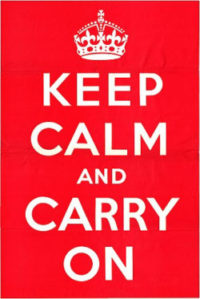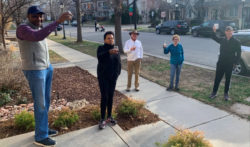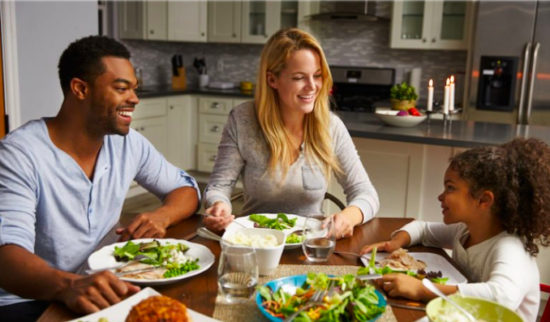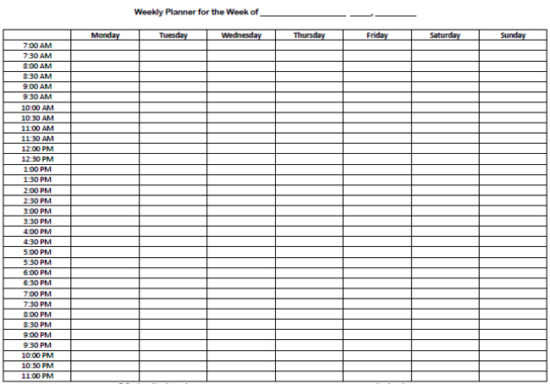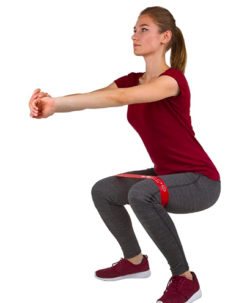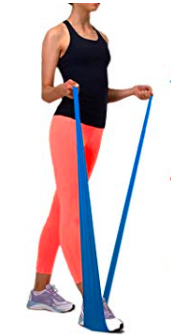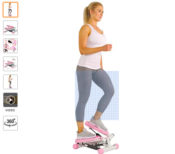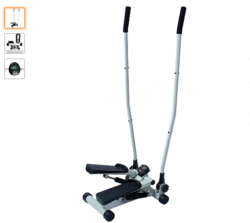Our Double Pandemic: One Feeds the Other
- At September 13, 2020
- By Katherine
- In Articles, News
 0
0
Does your blood measure 50 to 75 ng/ml of Vitamin D? Why is this critical to surviving COVID? COVID-19 science is advancing rapidly. One new and exciting discovery comes as no surprise: Vitamin D deficiency – a pandemic in many experts’ views – leads to significantly more COVID-19 hospitalizations, poor outcomes and lower survival rates, according to several studies and reviews published in Nutrients, The European Journal of Clinical Nutrition, Nutrition & Food Science (Nfs) Journal, Lancet Diabetes Endocrinology, Aging Clinical and Experimental Research, Medicine in Drug Discovery, and others. It’s such a no-brainer it is a must to have your Vitamin D level checked out with your doctor. In fact, please make your appointment today! That’s because if you don’t live near the equator, virtually no one has adequate Vitamin D blood levels. And – no – 30 ng/ml (what laboratory reports deem as fine) is not enough. Don’t be satisfied with taking supplements. Everyone’s supplement needs are different, so you have to have your blood checked.
Over the past 25 years or so, I’ve encouraged my clients, family and friends to check their Vitamin D blood values. Vitamin D deficiency is the norm in our modern culture, and it could be lethal. Adequate Vitamin D, the “sunshine vitamin” may promote the prevention and treatment of our most prevalent and life-threatening diseases, such as type 1 and type 2 diabetes, heart disease, hypertension, infectious diseases, cancer, glucose intolerance, even multiple sclerosis… and now it’s been established: COVID-19, too.
Even though medical labs have 30 ng/ml as normal (which is only enough to prevent rickets), most experts believe it is not high enough to get all of its benefits. The most recent National Academy of Sciences Food & Nutrition Board recommendation for your blood levels is between 50 and 75 ng/ml. To achieve this, I recommend taking anywhere from 1,000 to 4,000 IU (maximum safe upper limit) daily, depending on your blood value and your doctor’s recommendations.
Vitamin D Boosts Muscle Strength, Power & Velocity While Lowering Body Fat
The Vitamin Supplement You Should be Taking… Especially Now!
- At June 23, 2020
- By Katherine
- In Articles, News
 0
0
Vitamin D deficiency is linked to so many health conditions it’s mind boggling. And virtually none of us get enough, especially today.
When we first recognized Vitamin D’s significance about a century ago, all we knew is that a deficiency caused soft bones (rickets). Rickets causes children’s bones to become so flimsy, skeletal abnormalities flourish. For example, they literally can’t hold up their own bodies – causing extremely bowed legs. Adults acquire brittle bones (osteomalacia) which break easily.
Today, a growing body of research suggests that, beyond brittle bones, a Vitamin D deficiency influences a vast array of illnesses. It seems to increase your risk of hormone abnormalities, inflammation, oxidation and immune system suppression, all of which underly the development of numerous health conditions, including COVID-19.
Just to give you an idea about Vitamin D’s significance, it may promote the prevention and treatment of our most prevalent and destructive lifestyle disease, such as type 1 and type 2 diabetes, heart disease, hypertension, infectious diseases, glucose intolerance, even multiple sclerosis, and other medical conditions.
Vitamin D may decrease cancer risk, especially colon cancer, as well as breast, prostate, thyroid, liver, lung, prostate cancer, and even melanoma, a type of skin cancer. In fact, “Improvement in the quality of life of cancer patients receiving vitamin D supplementation has been documented in several studies,” according to a review of Vitamin D studies in the journal, Trends in Cancer Research.
Based on recent research, these conditions are more likely to be prevented and improved by having enough vitamin D in your system.
Why don’t we get enough Vitamin D? It is one of the rare essential vitamins we basically can’t get from food. It comes from sunshine, and our modern lives prevent us from getting an adequate supply – especially in isolation. Now, just imagine what the elderly are experiencing in isolation – for several months to date – as well as infants, children, or anyone who can’t venture outside. These are the most vulnerable population groups for not getting enough Vitamin D and that are susceptible to the consequences of Vitamin D deficiency. People of color are particularly at risk. Darker skin does not absorb sunshine as easily as lighter skin.
Back in the 1930’s, we practically eliminated rickets by adding 100 IU to eight ounces of milk. That gave us adequate Vitamin D. But that was then. This is now: Today’s limited sunshine exposure and milk intake, is allowing rickets to return with a vengeance, not only in children, but in adults, too.
Moreover, we’re now discovering the multitude of life-threatening illnesses its deficiency may be generating.
That’s because we spend most of our time indoors on our computers, working, watching TV, or in our cars. When we venture outside we’re covered in sunscreen, which blocks the ultraviolet (UV) rays necessary for producing Vitamin D in our bodies. While too much UV rays is strongly linked to skin cancer, careful skin exposure is recommended.
“It has been suggested by some vitamin D researchers that approximately 5–30 minutes of sun exposure between 10 AM and 3 PM at least twice a week to the face, arms, legs, or back without sunscreen usually leads to sufficient vitamin D synthesis,” according to the National Institutes of Health’s Office of Dietary Supplements.
The old, yet still prevailing recommendation for vitamin D is 400 IUs daily. Today, it’s unclear how much vitamin D each person needs to take because of variable sun exposure. But there seems to be a consensus among vitamin D scientists that blood values should be at least 50 ng/mL and there seems to be no benefit of going higher than 75 ng/mL, according to the National Academy of Sciences Food and Nutrition Board, the “gold standard” institution for state-of-the-art nutrition recommendations (though most medical labs consider 30 as adequate).
My clients and I take anywhere from 1,000 IUs (the lowest amount to take, I believe) to 4,000 IUs (the safe upper limit – UL) daily to achieve at least 50 ng/mL.
That said, be careful. Talk to your own physician about what you should do, considering your individual medical needs. That’s because, while natural sources in food and from the sun cannot cause overdoses, Vitamin D can be toxic when too much supplement is taken (4,000 IUs daily is the upper limit). In Europe in the 1950s, cases of soft tissue calcification, including in the heart and brain, led to mental retardation and other birth defects. It was caused by excessive vitamin D incorrectly added to the food supply. Ergo, supplementation has since been removed or scaled back in Europe.
Just like all nutrients, it’s important not to get too little – or too much. I call it the “Goldilocks effect,” because it needs to be just right!
Keep Calm and Carry On… Simple Techniques for Calming Isolation Stress
- At June 16, 2020
- By Katherine
- In Articles, News
 0
0

Stress, anxiety and depression are at all-time highs, according to recent studies. Feeling stressed is a normal reaction to today’s crisis, but if prolonged, it can disturb your immune, digestive, cardiovascular, sleep, and reproductive systems. You may also experience digestive symptoms, headaches, sleeplessness, sadness, anger, or irritability, according to the National Institute of Mental Health.
I’m sure you have already realized that “This is not a crisis that adrenaline can get us through,” as Brené Brown said, research professor and social worker at the University of Houston, in a recent webinar. “We are in a long duration marathon, and we have to find a sustainable way [to live],” she added
I can help you create the sustainable way to live that improves your overall well-being – based on your own personalized needs – with just a few virtual sessions. Habit building leads to greater health. Now is the perfect time to craft exceptional life satisfaction! You can book at Katherine@PersonaledNutrition.com
In today’s article, I’d like to share some simple techniques to help reduce your stress, increase your energy and improve how you feel and cope.
Even if you exercise, I recommend you add some form of meditation to your daily routine. Before rolling your eyes, many activities you already do can qualify. The only requirement is that your activity choice contains the four elements I’ve described below:
1. Meditation is a mind and body practice with a long history for increasing calmness and physical relaxation, improving psychological balance, coping with illness, and enhancing overall health and well-being, according to the National Institute of Complementary and Integrative Medicine.
In my experience, meditation can also help you control destructive, stress-related habits such as emotional eating, cigarette, alcohol, drug abuse, and other impulsive or addictive behaviors.
There are many types of meditation, but most have four elements in common:
1) A quiet location with as few distractions as possible;
2) a specific, comfortable posture (sitting, lying down, walking, or in other positions);
3) a focus of attention (a specially chosen word or set of words, an object, or the sensations of the breath); and
4) an open attitude (letting distractions come and go naturally without judging them)
Try these two easy techniques – music and / or meditative movement – that have worked for me and my clients:
- Music. Have you heard that music soothes the savage beast (inside all of us)? Science proves it. Choose music that can get you in the “zone” and involves the four elements (listed above). Medieval music is one of my favorites for relaxing. Gregorian chants are popular. How about Celtic Music? Gentle nature sounds, like birds chirping, waves pounding on a beach, and rainstorms are popular. Religious music has been used for thousands of years to help worshipers concentrate. Try Tibetan music, too. Whatever floats yer boat!
- Meditative Movement is my favorite form of meditation and great for beginners. It uses movement in conjunction with meditative attention to body sensations, posture, rhythm and breathing: Tai Chi, a centuries-old martial art, Yoga, from 3,000 BCE and Qigong, more than 4,000 years old, are considered meditative movement practices. Tai chi is easy and very relaxing. I especially like this 8-minute beginners video.
2. Regular exercise releases natural feel-good brain chemicals like endorphins and seratonin, increasing feelings of well-being and happiness while reducing depression and anxiety. It can prevent the conditions that may make COVID-19 lethal, like obesity, diabetes and hypertension, but also heart disease, stroke, cancer and cognitive decline. Getting out into the fresh air is ideal. The coronavirus is less likely to spread outdoors, according to infectious disease specialists, and mask-wearing is only needed if you can’t socially distance at least 6 feet. But if inside with the public, mask wearing is essential. I also have some inexpensive ideas for indoor home exercise.
If you are experiencing more than stress, like severe anxiety or depression, please seek medical help. About 30% of the general U.S. population have symptoms of depression and/or anxiety, as reported by a recent Centers for Disease Control survey, with the highest rate – 40% – in 18 to 29 year-olds.
Isolation Part 3: Katherine’s Silver Lining Approach – Use This Time to Get Healthy & Fit!
- At March 23, 2020
- By Katherine
- In Articles, News
 0
0
Yesterday morning I was so tempted to skip exercise. It was hard tearing myself away from reaching out to you. Are you happy with your health and weight? Can I help? Would you like to join me? Since I don’t want to go to pot, I exercised! What about you?
There is light – or clouds – at the end of the tunnel. You could come out of today’s situation with new, great habits, in better shape, even happier, healthier, and feeling proud of yourself. Or you could end up feeling miserable, with higher blood sugar, blood pressure, cholesterol and body fat. What’s it going to be?
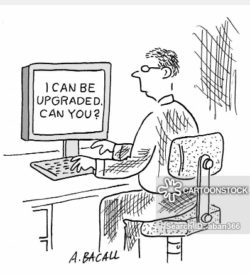 I’m trying to take the “silver lining” approach and consider this moment as an opportunity to improve my habits.
I’m trying to take the “silver lining” approach and consider this moment as an opportunity to improve my habits.
Would you like to join me? Organizing your routine, day by day – even hour by hour – is important for introducing calm, relief, improved productivity, health, and even happiness into your life during this stressful time.
The first step to transforming this isolation into a happier, healthier time is creating a schedule with which everyone agrees. Ask yourself and your family members the following questions:
- What has the normal schedule for everyone been, before isolation began?
- Which activities does everyone want to include every day?
- What goals do you want to achieve now, and at the end of isolation?
- How can you design a schedule at home that includes 1.Exercise/recreation, 2.Work/learning, 3.Socializing, 4.Relaxation/meditation/prayer, and 5.Renewal/sleep
Here is an example of what your schedule may look like. This is a template. You could make yours with more – or less – detail and different activities.
Some ideas:
7 am Coffee
7:30 am Exercise: at least 4,000 steps with Family
8:30 am Shower
9:00 am Breakfast with Family
10:00 am Work / Study
11:00 am Short Walk or Play
11:15 am Work / Study
12:30 pm Lunch with Family
1:30 pm Recess for All!
2:30 pm Back to Work / Study
3:30 pm Short Walk or Play
3:45 Back to Work
5:00 Dinner with Family
6:00 Exercise: at least 4,000 steps with Family
7:00 Recreation / Relaxation / Homework
8:00 Recreation / Relaxation / Homework
? Renewal / Bed Time / Sleep
Make up your own schedule. But have one! I’d be happy to help.
Isolated? Part 2: Ideas & Products for Home Exercise
- At March 14, 2020
- By Katherine
- In Articles, News
 0
0
As I was (virtually) meeting my many isolated clients this week, I realized that chaos could reign if we didn’t think fast and do something NOW. One of my biggest worries is that inactivity can take over. Stir crazy anyone?
 Children aren’t playing their daily school sports, college students aren’t walking to and from their classrooms, adults aren’t moving around their offices, businesses are closing down, and virtually no one is going to the gym. What’s a quarantined human to do besides finding comfort in a padded cell or imprisoning your family?
Children aren’t playing their daily school sports, college students aren’t walking to and from their classrooms, adults aren’t moving around their offices, businesses are closing down, and virtually no one is going to the gym. What’s a quarantined human to do besides finding comfort in a padded cell or imprisoning your family?
I had a Eureka moment the other day. Over the past several years, I have invested in some inexpensive exercise gadgets that take up hardly any space, and I’m recommending them to my clients. You can get excellent instruction on how to use these from a certified trainer (I’ll bet your trainer or physical therapist would be willing to work with you via FaceTime or Skype), or online. You may want to consider these easy-to-use exercise aids:
HealthySport 10″ Resistance Band Loops
TheraBands Professional Non-Latex Elastic Bands Set
Sunny Health and Fitness Adjustable Twist Stepper
Phoenix 98107 Duel Action Mini Stepper
Mini treadmills that can go under your desk: “Opps Decor,” “Goplus,” “Ancheer,”
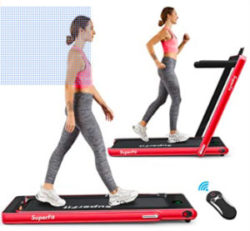
Mini treadmills can even go under your desk. I love them, my clients love them. It will transform your health and your life!
Isolated? The Power of Music
- At March 14, 2020
- By Katherine
- In Articles, News
 2
2
As I was (virtually) meeting my clients this week, I realized that, by now, home life could be pretty chaotic if we haven’t come up with solutions so we can all stay healthy – and sane.
First, the psychological: Our frame of mind forms the foundation of our responses and our ability to cope. For instance, taking the high road by helping each other as much as possible (instead of playing the blame game). Understanding: We’re all in this together! Not just our families, our communities, our schools, sports, businesses, but the world.
 Italians really know how to make the best of any situation: I just enjoyed some video clips of quarantined Italians singing joyfully together from their apartment balconies (picture a scene in the classic Hitchcock movie, “Rear Window”). Even an opera singer was serenading her neighbors with an aria. What spirit! I have a vision of my neighbors and I singing from our windows and front stoops. Hmmm… What aria will we bellow out to each other?
Italians really know how to make the best of any situation: I just enjoyed some video clips of quarantined Italians singing joyfully together from their apartment balconies (picture a scene in the classic Hitchcock movie, “Rear Window”). Even an opera singer was serenading her neighbors with an aria. What spirit! I have a vision of my neighbors and I singing from our windows and front stoops. Hmmm… What aria will we bellow out to each other?
I’m serious. Soprano Renée Fleming and the National Institutes of Health teamed up to research the effects of music on the brain. Does music soothe the savage beast? The initiative is called “Sound Health: An NIH-Kennedy Center Partnership.” Some initial scientific findings:
- Music helps brain networks mediate emotion, relieve stress and help treat depression,
- Musical training can foster the development of a variety of nonmusical

Sound Health: NIH & Kennedy Center Team Up to Explore Music & The Brain. Soprano Renée Fleming, CNN’s Sanjay Gupta, NIH Director Francis Collins
skills in children,
- Music therapy can help childhood cancer patients cope with the stress of treatment,
- Music may help relieve pain, including its impact on several brain circuits and pathways, and
- Musical activities benefit the aging brain, including promising applications in people with Parkinson’s disease, stroke, or dementia.
I don’t know about you, but I’m CALLING ALL NEIGHBORS!
Rev-Up Your Immune System Through Nutrition
- At March 11, 2020
- By Katherine
- In Articles, News
 0
0
Check out CNN’s video featuring Katherine’s immune-boosting tips:
What you eat profoundly affects your ability to fight disease. With all the nasty bugs going around this cold and flu season, it’s especially important to pay attention to boosting your immune system through nutrition. While every nutrient is important for your body’s ability to prevent and fight disease – from colds to cancer – certain nutrients play key roles:
Found naturally in yogurt and kefir, probiotics nourish your gastrointestinal tract’s microbiome, that is, its microscopic ecosystem of cells called “microbes.” The health of your microbiome can make – or break – your health in every way. Eating foods high in probiotics (and prebiotics) is the best, if not the only, way to make sure your microbiome is filled with those healthy microbes.
But probiotics can’t work alone. To be effective, you also need foods containing prebiotics, certain high fiber plant foods, to create the good health you desire. Prebiotics nourish probiotics. Together they form the critical prebiotic/probiotic duo creating a microbiome teeming with healthy microbes that achieve the superior level of beneficial microbes that fight off chronic and acute diseases.
While not always, microbes usually live in harmony with their human hosts. They inhabit just about every part of the human body, living on the skin, in the gut, and up the nose. The healthy ones, increased with probiotics, are essential for good health and survival.
But there are dangerous ones, too, that cause disease and death. The typical American diet and lifestyle produce more of the disease-causing microbes. Your health and quality of life suffer dramatically when the unhealthy microbes outnumber the healthy ones. The only way to keep that from happening is to consistently nourish your body the right way so you can be as healthy, happy and energetic as possible.
Your prescription:
DAILY eat yogurt or kefir, in whatever form you like best
Protein
Protein is one of the most important nutrients in the human body, second only to water. Bone health, muscle function, muscle strength, muscle mass and immune function — all are impaired with a low protein intake. In fact, the antibodies which are essential to protecting your body against pathogens, are made of protein, so without enough protein, your body has no chance. Certain vulnerable populations, such as the elderly, children, and those who already have compromised immune systems, should be particularly careful to eat enough protein – in fact, even more than the recommended dietary allowance – for maximized protection.
Protein can be found in a wide range of foods. Animal protein is in seafood, dairy, meat, poultry and eggs. Vegetarian protein can be found in legumes, soy, vegetables and whole grains. And while it’s true that high-protein foods often bring fat and calories along as uninvited guests, it doesn’t have to be that way. The lowest-calorie animal protein sources are the leanest. Go for eggs, seafood, poultry with no skin, skim milk, nonfat or low fat yogurt, and low fat cheeses are also great options. Soy products also provide great low-calorie options and are high quality proteins similar to animal protein.
Protein foods have other benefits. Fish, legumes, seeds, nuts contain immune-boosters zinc and iron (but in too high quantities, for instance in megadose vitamin pills, can backfire and suppress the immune system). Dairy products (keep them fat-free or low fat) are naturally loaded with magnesium, potassium and calcium – all important for immune function. Beans and soy beans are high in iron, zinc and magnesium.
Fats and Oils
The type of fat you eat can improve the effectiveness of your body’s immune response because fat ends up in all of your body’s cell walls. It acts as a cell lubricant, improves flexibility and communication between cells, and is important for cell metabolism and gene expression. If the fat you eat is saturated – solid at room temperature – as in butter or animal fat – this decreases cellular flexibility and functioning. So, to maximize your immune response, use oils in your cooking, such as olive oil (for drizzling), peanut/nut oils (for high heat cooking), and canola oil (for high heat cooking), and stick with foods high in heart-healthy fats, such as nuts, avocados and fatty fish, which is high in omega-3-fatty acids. Minimize animal fats in dairy products, red meats, butter, cream, or too many foods or desserts containing said ingredients. They increase the incidence of cardiovascular disease. Red meats (pork, beef, lamb) also increase the risk of many cancers, particularly when they’re cured.
Vitamins and Minerals
Studies show all nutrients are involved in your immune response but taking high doses of certain nutrients can cause imbalances, backfire, and actually suppress your immune response. So it’s ideal to get your vitamins and minerals from a nutrient-rich, balanced diet. Though you may benefit from taking a basic multi-vitamin and mineral supplement to cover your bases. And there may be some exceptions depending on your own nutritional status (best to get personalized advice from your dietitian and doctor)…
Vitamin D
New research has found Vitamin D augments the body’s ability to eliminate disease-infecting microbes, and most of us are deficient in Vitamin D, which we get from the sun and very few foods. Your doctor should check your vitamin D status at your next visit to make sure your blood values are adequate to fight infection, among other things. That said, most of us need a vitamin supplement with vitamin D, usually somewhere between 1,000 and 4,000 IU/day. But check your blood values first. They should be somewhere between 50 and 75 for most people. Check out my “Vitamin D” article for more details…
For Those Over 50
Vitamin E
Studies from Tufts University found that vitamin E supplementation may help fight the common cold and other upper respiratory tract infections. The recommendation is about 400 IU/day
Zinc
Zinc helps fuel the production of infection-fighting white blood cells so a lack of zinc reduces immune response and illness recovery time is prolonged. The elderly are particularly vulnerable to deficiencies and may even need more than normal. So here’s another case where a supplement may be useful. When zinc supplements were given in a nursing home, residents reduced their risk of contracting pneumonia, according to researchers from the Jean Mayer USDA Human Nutrition Research Center on Aging at Tufts University.
Vitamin B 12
Vitamin B 12, another nutrient important for immune function, is poorly absorbed in many elderly patients (and is missing from the diet of vegans) which is why your vitamin B 12 status should be checked by your doctor and you may need a supplement – in the form of an injection. For most of us, though, B 12 is easily obtained and absorbed by eating any animal products.
The following is a list of foods containing key immune-boosting nutrients.
Include them in your diet every day:
High Beta Carotene Foods
Orange and deep green veggies and fruits, particularly…Carrot juice, carrots, butternut squash, pumpkin (or any orange-colored winter squash), sweet potato, greens such as spinach, collards, kale, turnip greens, beet greens, orange melons such as cantaloupe, red peppers, apricots, broccoli, plums, mangos papayas, plantains, Brussels sprouts, watermelon, asparagus
High Vitamin C Foods
Citrus fruits such as orange, lemons and grapefruit, peaches, sweet and hot peppers, papayas, pineapple, strawberries, broccoli,kiwi fruit, sweet potatoes, Brussels sprouts, kohlrabi,
High Zinc Foods
Oysters, lobster, crab, clams, fortified whole grain cereals, beans (legumes such as lentils, chick peas, black-eyed peas, soy beans, kidney beans, limas, pintos), turkey, whole grains such as buckwheat, whole wheat, cracked wheat (bulgur), oats, whole grain cornmeal, wild rice, yogurt, pine nuts, sunflower seeds, mixed nuts, peanuts
High Magnesium Foods
Whole grains such as buckwheat, wheat, oats, cornmeal, barley, brown rice, Also soybeans, pumpkin seeds, brazil nuts, cashews, greens such as spinach, beet greens, fish such as halibut, haddock and flounder and sole species, beans (legumes such as black beans, white beans, soy beans, navy beans, limas, black-eyed, great northern, kidney, chick peas,. lentils)
High Vitamin E Foods
Sunflower seeds, almonds, sunflower oil, safflower oil, canola oil, hazelnuts, pine nuts, spinach, turnip greens, beet greens, dandelion greens, canned pumpkin, carrot juice, broccoli, sweet potato, sweet red peppers, mangos, papayas
Cranberries
Have antibacterial qualities. Eat them dried for the highest levels of nutritious compounds
Have a myriad of beneficial health effects. They’ve been shown to boost the immune system, especially in relation to cancer. Called a “drug-botanical interaction,” mushrooms appear to increase the effects of chemotherapy, and lengthen survival.
Mushrooms also reduce fatigue.They act on the muscular system, body antioxidant system, cardiovascular system, hormone system, and immune system, all of which improve liver function, blood circulation, and blood glucose regulation, among other benefits.
Immune-Boosting Eating Strategies
* Eat a lean protein source at every meal – including breakfast, lunch and dinner. 20 grams for women and 30 grams for men is the amount most bio-available per sitting.
* Eat 5 cups of fruits and veggies per day – especially colorful varieties, eat at every meal and snack
* Eat a vegetarian meal every day using beans or soy beans for protein,
* Eat fish high in omega-3-fatty acids, such as salmon, herring, anchovies and sardines, at least two to four times per week, and vegetarian sources such as walnuts, ground flax seeds and canola oil,
* Use canola oil in your cooking and a fresh, newly harvested olive oil for drizzling,
* Eat whole grains at breakfast (such as cereal with skim milk or soy milk) and with sandwiches or wraps at lunch,
* Snacks: Try fat-free yogurt and fruit, fat-free yogurt dip or hummus with veggies,
* Toss nuts/seeds/dried cranberries in your whole grain cereal, your salad or your afternoon yogurt snack
* Skim milk or Soy lattes or teas are great snacks, too…
* Take a multivitamin-mineral supplement daily.
* Take a Vitamin D Supplement so that you are getting 1,000 to 2,000 IU/day
* If you are over 50, but particularly 65, look into supplementing your diet with Vitamin E, Vitamin B12, Zinc and probiotics such as lactobacillus in yogurt.
Of course, don’t forget to keep your blood moving by being moderately physically active with plenty of walking, yoga, etc. Get plenty of rest, wash your hands frequently, drink fluids (especially warm fluids which will send light steam into your nasal passages) and spend time with friends and loved ones. Studies have shown these habits increase your ability to conquer diseases – from colds to cancer.




